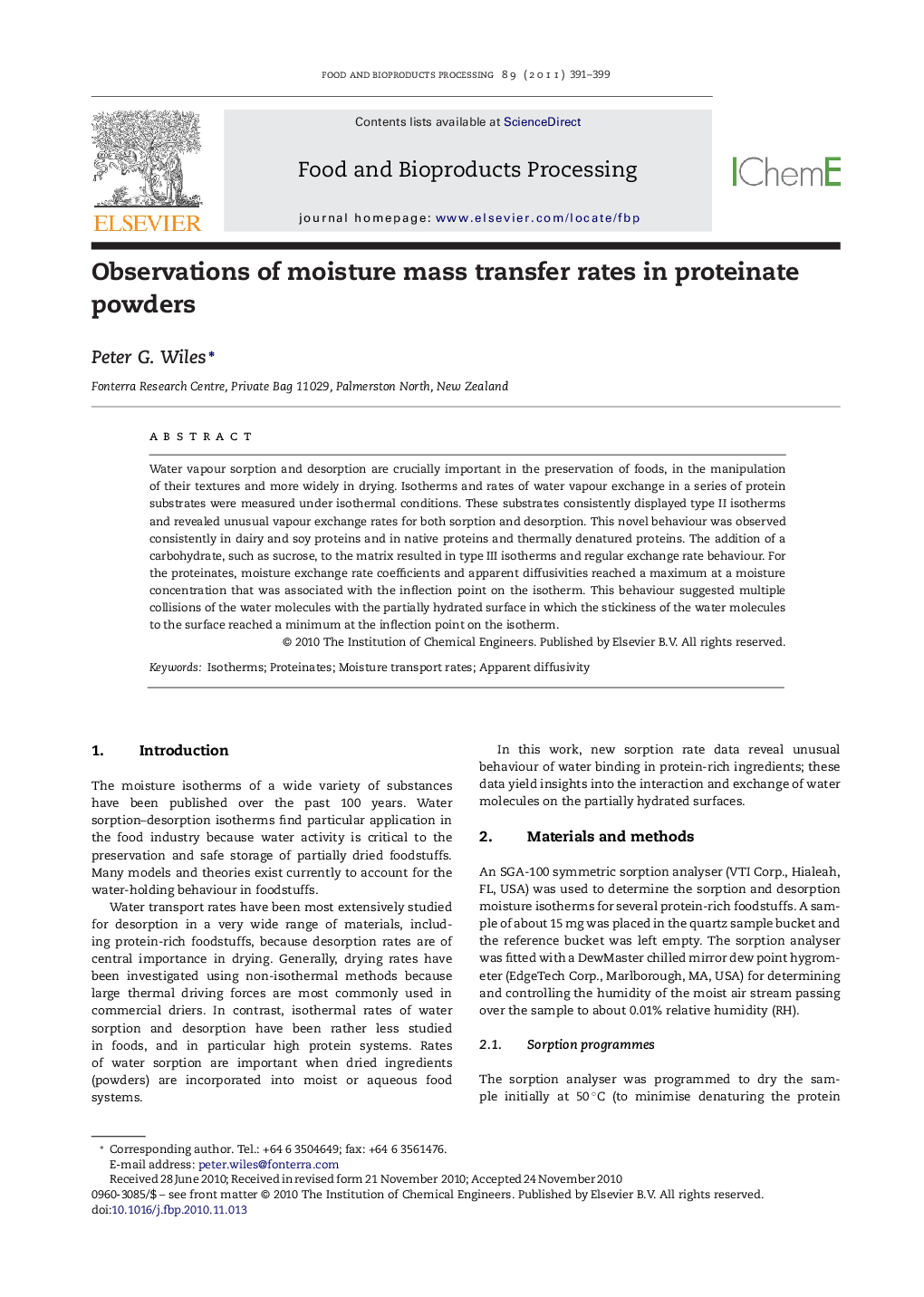| Article ID | Journal | Published Year | Pages | File Type |
|---|---|---|---|---|
| 19385 | Food and Bioproducts Processing | 2011 | 9 Pages |
Water vapour sorption and desorption are crucially important in the preservation of foods, in the manipulation of their textures and more widely in drying. Isotherms and rates of water vapour exchange in a series of protein substrates were measured under isothermal conditions. These substrates consistently displayed type II isotherms and revealed unusual vapour exchange rates for both sorption and desorption. This novel behaviour was observed consistently in dairy and soy proteins and in native proteins and thermally denatured proteins. The addition of a carbohydrate, such as sucrose, to the matrix resulted in type III isotherms and regular exchange rate behaviour. For the proteinates, moisture exchange rate coefficients and apparent diffusivities reached a maximum at a moisture concentration that was associated with the inflection point on the isotherm. This behaviour suggested multiple collisions of the water molecules with the partially hydrated surface in which the stickiness of the water molecules to the surface reached a minimum at the inflection point on the isotherm.
Research highlights▶ Protein-rich ingredients displayed typical type II isotherms for water sorption but anomalous water vapour exchange rate behaviour. ▶ Dilution of the protein with sugar changed the moisture isotherm to type III and these displayed regular vapour exchange rates. ▶ The data suggested strong interaction between the water vapour molecules and the pore surface with partially hydrated protein–water vapour interactions characterising the behaviour below the inflection in the isotherm, and water film–water vapour interactions above the inflection point. ▶ Many models are used to describe moisture isotherms in foods, but these do not adequately account for the observed behaviour.
